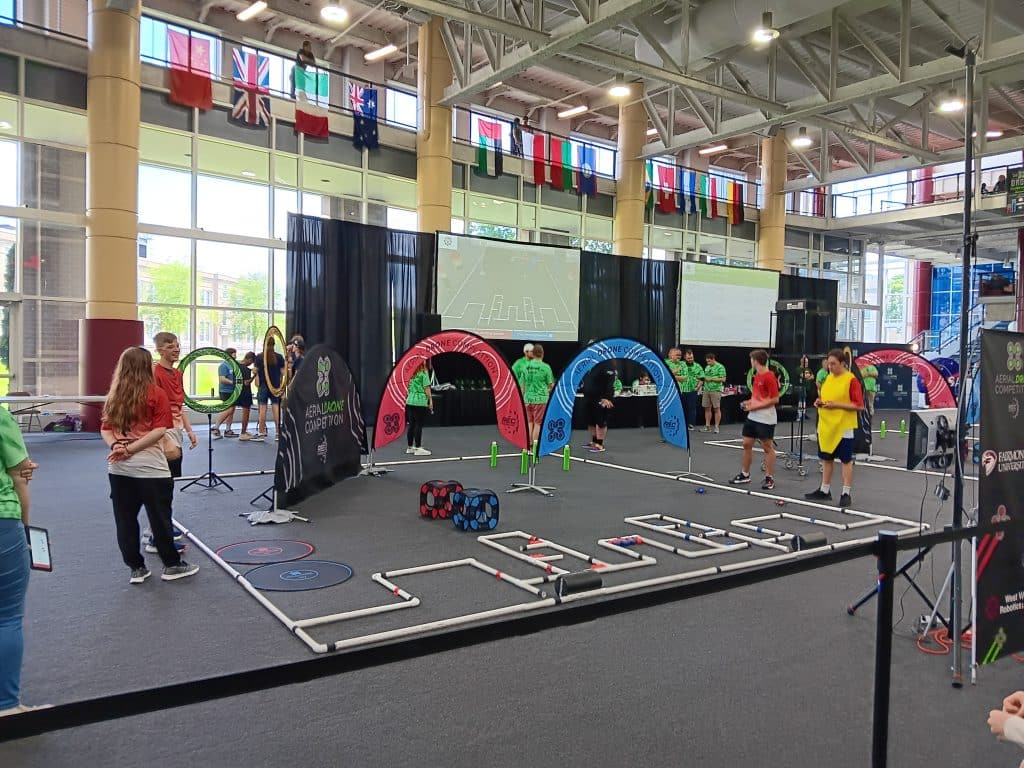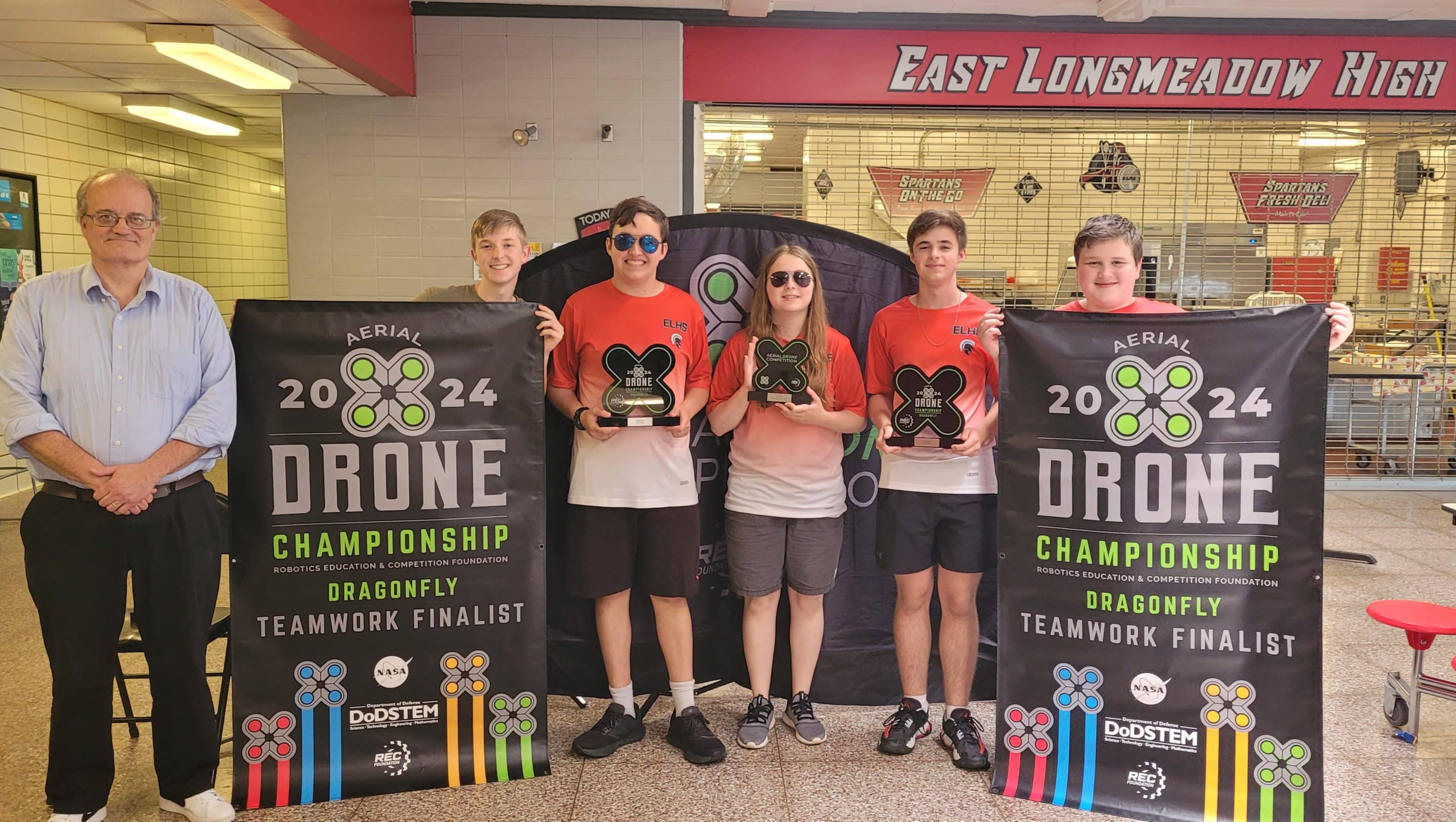Members of the East Longmeadow High School Aerial Drone Team 1476, The Flying Sparticles, stand with their awards and banners from the recent Northeast Aerial Drone Championship, where they won second place among 58 other teams. Pictured from left to right are club advisor Peter Van Buren, Wayne Healey, William Preye, Cassandra Callahan, Chase DiMascola and Patrick Fitzgerald.
Reminder Publishing photo by Laura Mason
EAST LONGMEADOW — The Flying Sparticles, East Longmeadow High School’s aerial drone team, won second place at the Northeast Aerial Drone Championship after competing with 58 other teams across 14 states.
Hosted at Fairmont State University in Fairmont, West Virginia, the competition took place between May 17-18. During the event, the three teams of The Flying Sparticles — Team 1476A, 1476B, 1476C — each competed in multiple sections of this year’s aerial drone competition by the Robotics Education and Competition Foundation, named Mission 2024: Eclipse.

Reminder Publishing photo by Peter Van Buren
While East Longmeadow High School has maintained a robotics team since 2008, this was the first year that the school had an aerial drone team, club advisor Peter Van Buren told Reminder Publishing. He explained that the team competed in about four other competitions before attending the regional championship, starting in October 2023.
Of the team’s eight members, five attended the Northeast championship, Van Buren said. They are Cassandra Callahan, Chase DiMascola, Patrick Fitzgerald, Wayne Healey and William Preye. The team also includes Jennifer Bui Lucas Kotomski and Lucas Santiago, he stated.
Mission 2024: Eclipse contains three main game components. In the Teamwork section, two teams work together to complete tasks such as pushing table tennis balls out of specific areas, flying through hoop obstacles and landing on certain colored mats, The Flying Sparticles members explained.
The two other main game components occur within the Skills challenge section. These components are piloting and autonomous flight. They are each completed by individual teams during 60 second matches, the team described.
In order to reach its second-place win, The Flying Sparticles competed in the championship’s qualification, quarter-finals, semi-finals and final stages, team members told Reminder Publishing.
The team was able to participate in the competitions due to support from nonprofit the East Longmeadow Educational Endowment Fund, which awarded the team a grant to purchase their drones, and nine local sponsors who supported the team’s travel and competition entry costs, Van Buren stated.
He emphasized that the team allowed the students an opportunity to make friends and connections from across different states. Van Buren, who teaches principles of engineering at the high school, also noted that the experience helps students decide whether they are interested in pursuing engineering after high school.
While speaking with Reminder Publishing, The Flying Sparticles members highlighted how the experience was “fun [and] memorable,” stating that it allowed them to meet new friends, grow closer to each other, find new interests and work cooperatively. They excitedly shared stories from the trip, such as one member wearing a banana costume and becoming friends with a team from Vermont.
With the aerial drone team’s different schedule and set up from ELHS’s robotics team, The Flying Sparticles opened up the competition experience to students who were previously unable to join due to other commitments or hadn’t heard of the team, Van Buren said. He highlighted that he originally started the clubs in order to help students “get excited” about engineering.
For more information about the REC Foundation’s aerial drone competition, visit recf.org/aerial-drone-competition.



